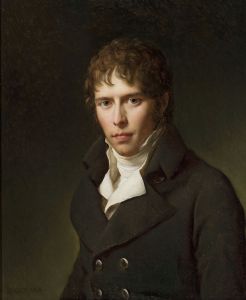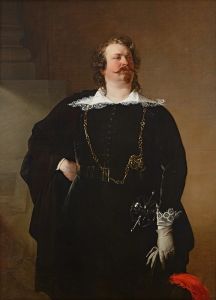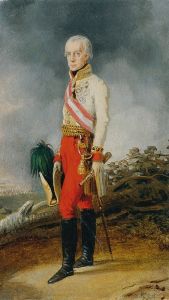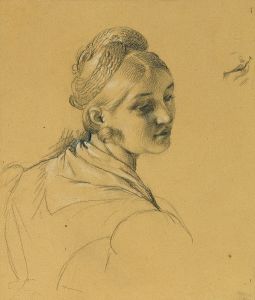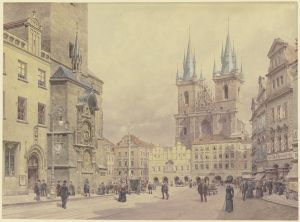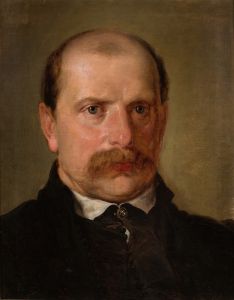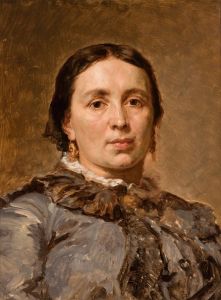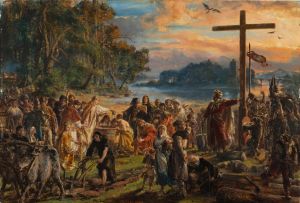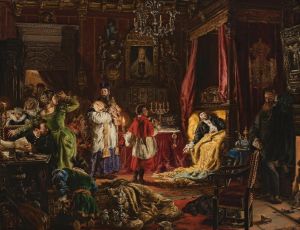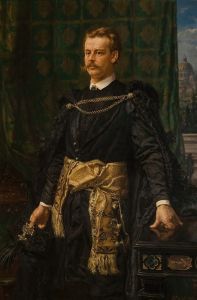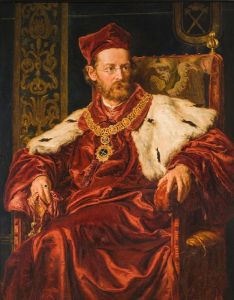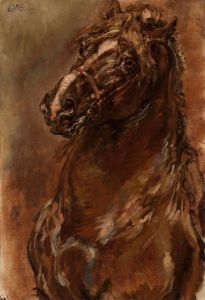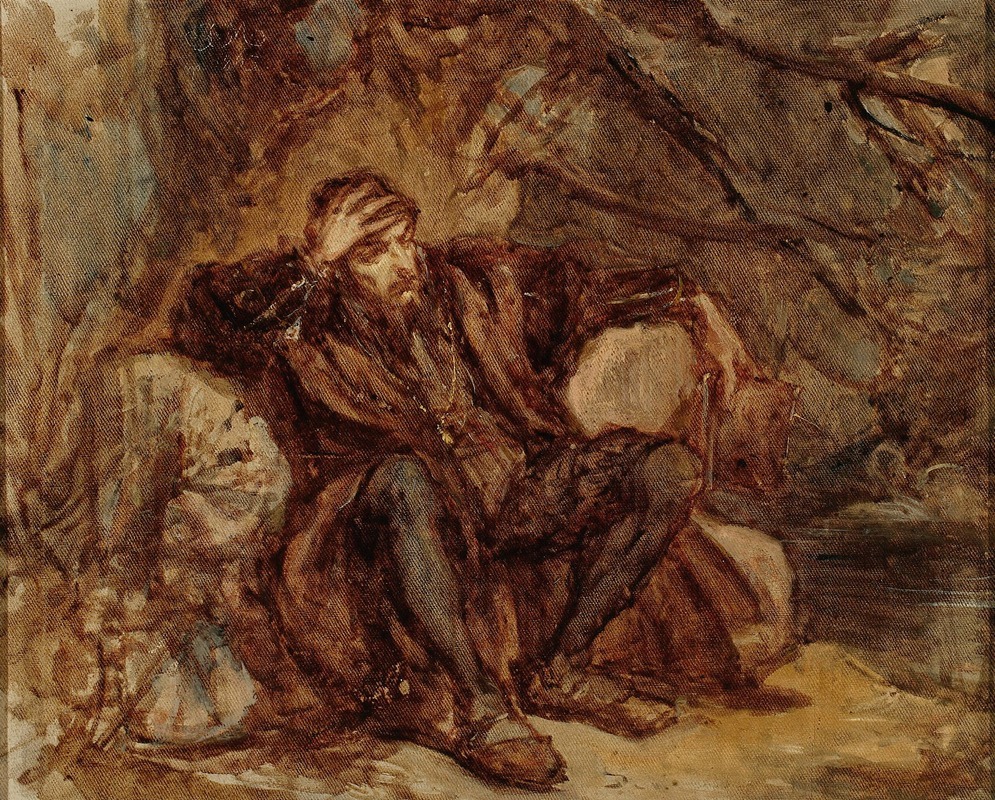
Sigismund Augustus in the Vilnius garden, sketch
A hand-painted replica of Jan Matejko’s masterpiece Sigismund Augustus in the Vilnius garden, sketch, meticulously crafted by professional artists to capture the true essence of the original. Each piece is created with museum-quality canvas and rare mineral pigments, carefully painted by experienced artists with delicate brushstrokes and rich, layered colors to perfectly recreate the texture of the original artwork. Unlike machine-printed reproductions, this hand-painted version brings the painting to life, infused with the artist’s emotions and skill in every stroke. Whether for personal collection or home decoration, it instantly elevates the artistic atmosphere of any space.
"Sigismund Augustus in the Vilnius Garden" is a sketch by the renowned Polish painter Jan Matejko. Matejko, born in 1838 and passing in 1893, is celebrated for his detailed and historically rich paintings that often depict significant events and figures from Polish history. His works are characterized by their meticulous attention to historical detail and their ability to capture the essence of the periods they represent.
This particular sketch features Sigismund II Augustus, who was the last King of Poland and Grand Duke of Lithuania from the Jagiellonian dynasty. Sigismund Augustus reigned from 1548 until his death in 1572. His reign was marked by significant political and cultural developments, including the Union of Lublin in 1569, which united the Kingdom of Poland and the Grand Duchy of Lithuania into a single state, the Polish-Lithuanian Commonwealth.
The setting of the sketch, the Vilnius garden, is significant as Vilnius was a major center of political and cultural life in the Grand Duchy of Lithuania. During Sigismund Augustus's reign, Vilnius was a thriving city, known for its diverse population and as a hub of Renaissance culture and learning. The garden setting may reflect the king's interest in the arts and sciences, as well as his efforts to cultivate a sophisticated court culture.
Jan Matejko's choice to depict Sigismund Augustus in a garden setting could be interpreted as a nod to the king's personal interests and his role in fostering the Renaissance in Poland and Lithuania. Sigismund Augustus was known for his patronage of the arts and his collection of books and artworks, which were among the most impressive in Europe at the time. His court attracted artists, scholars, and scientists from across the continent, contributing to a vibrant cultural milieu.
Matejko's sketches often served as studies for larger works or as explorations of historical themes and figures. While "Sigismund Augustus in the Vilnius Garden" is a sketch, it likely reflects Matejko's deep interest in the Jagiellonian period and his desire to capture the complexities of its historical figures. Matejko's works are noted for their historical accuracy, and he often conducted extensive research to ensure the authenticity of the costumes, settings, and events depicted in his art.
The sketch is part of Matejko's broader oeuvre, which includes famous paintings such as "The Battle of Grunwald" and "The Prussian Homage." These works have cemented his reputation as one of Poland's greatest historical painters, and they continue to be celebrated for their artistic merit and historical significance.
In summary, "Sigismund Augustus in the Vilnius Garden" by Jan Matejko is a sketch that captures a moment in the life of a significant historical figure within a culturally rich setting. It reflects Matejko's dedication to historical accuracy and his ability to bring the past to life through his art. The sketch is a testament to the enduring legacy of both Sigismund Augustus and Jan Matejko in the cultural history of Poland and Lithuania.





